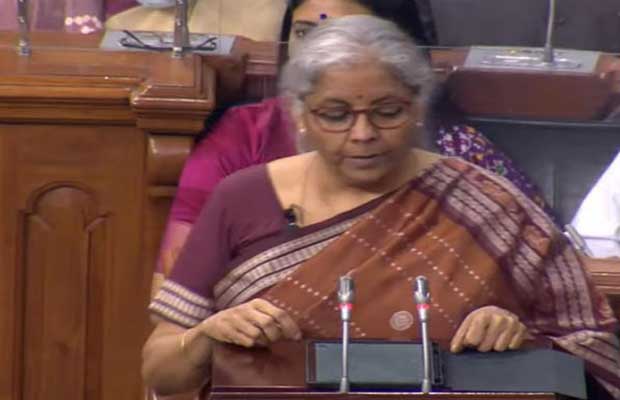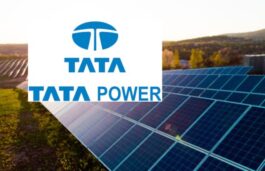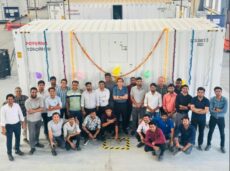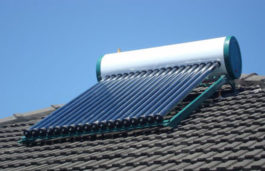
As the dust settles on the budget announcements, by all accounts the budget continues to lose relevance in terms of the sort of disruptive changes it could bring earlier.
For the renewable sector, that means even as the loud clamor for a reduction of GST rate on equipment like turbines and modules from 12% to 5% was ignored, hope remains that it might be taken up at at subsequent meetings of the GST council. Other demands like classifying renewable lending as ‘Priority sector lending’ for banks seem to have been ignored completely for now. At least until the next budget. Ditto for the really long shot of yet another tweak on the ALMM requirements for C&I segment, where the government has clearly decided to wait at least till September to evaluate impact on the ground. From all indications, the mindset is not to tweak any more. When asked, a government source told us that the one consistent issue for the industry has been consistency in policies, and they should welcome this new found resolve to stay unmoved.
More Thermal Versus Solar Plus Storage Or Hybrid Renewables?
The announcement of the 2400 MW thermal power project at Pirpainti in Bihar, with an estimated cost of Rs 21,400 crore seems like a surrender to politics, as a project this size will take a minimum of 60 months, probably a few cost overruns, and much else to finally deliver power at 60-70% plant load. At a cost that is expected to be at least Rs 4.25 per unit or higher. Those numbers are scarily poor when compared with the same investment in say, solar incentives with battery storage. With the government’s own SECI discovering solar plus storage prices at Rs 3.41 per unit recently even after accounting for longer duration backup, one suspects the final cost, at under Rs 5 per unit would easily beat coal fired power from Pirpainti in the medium to long term. Not to mention the fact that it would probably be up and running in 36 months or less. Faced with rising power demand, the government has clearly gone with the familiar over the new, the polluting over clean. The risk of failure has been considered unacceptably high with renewables, an unfair situation considering how little time it has been since renewables will truly allowed to flourish at well under a decade.
Policy On PSP Projects
In yet another case of bending to more influential (read-larger) developers, the announcement of a policy on Pumped Storage Projects is iffy, at best. It is no-one’s argument that PSP will be a key part of the mix for India’s renewable ambitions and a stable grid. But construction times, and perfecting the optimum design and development of these is no easy matter. PSP also remains a big boys game with its high capex requirements and complicated approvals process. Which makes the fact that any impact of whole sale backing for PSPs will show an impact only post 2030 a truism. In other words, a focus on PSP over say, battery based storage or a strengthened transmission grid to handle more renewables earlier, seems designed to justify the focus on thermal for now. Or nuclear for that matter, where actual impact on the ground will be visible post 2035, if at all, considering the pace of capacity additions. SMRs, or Small modular reactors are also nowhere in the picture in India yet, even as we seem to be counting on them too early.
As of May 2024, eight PSPs are operational in India with a cumulative storage capacity of 4,745 MW, according to the Central Electricity Authority. Four projects of 2,780 MW are under-construction and 33 projects of 42,150 MW are undergoing feasibility studies. With potential investments of over Rs 2.5 lakh crores tied to these, the government may have found the attraction of PSPs irresistible politically.
Support For Domestic Manufacturing
While the budget has not dissappointed here with the broader scope of support for solar BOS and solar glass makers, the government will also need to keep an eye on the impact on end consumer prices. Protection will need to walk a fine line between establishing energy security with a strong domestic industry, but also the kind of low prices India needs to sustain capacity additions in renewables. These trends should play out clearly over the remaining part of this year. But industry insiders who say that we could be paying 15-20% less with a liberalised import regime will find no takers for their arguments really unless solar prices for say, SECI were to cross Rs 2.75 or more.
On the positive side, capacity domestically will be boosted tremendously with the formal launch of production at the Reliance Gigafactories which will add almost 10 GW in one go just for solar modules. Cell manufacturing will also be boosted significantly by next year, perhaps even to self sufficiency levels if all goes to plan for multiple manufacturers expanding or venturing into cell manufacturing.






























